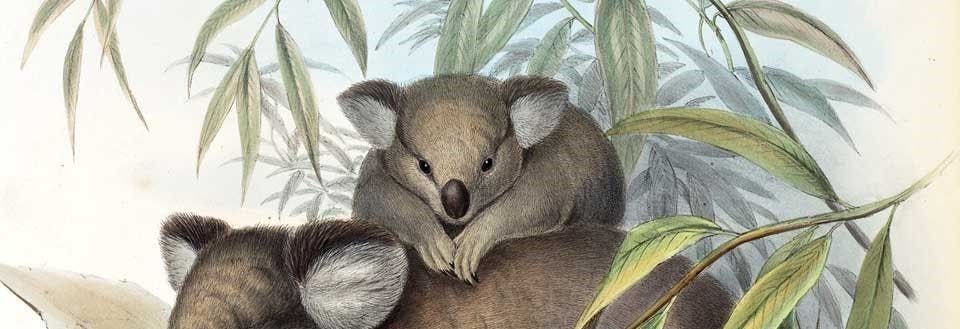Lesson, René Primevére (1794-1849).
Voyage autour du monde entrepris par ordre du gouvernement sur la corvette la Coquille. Paris: P. Pourrant frères, éditeurs, 1839.
René Lesson was a zoologist on the voyage of the Coquille, 1822-25, and he helped write the volume on zoology for the official narrative and prepare the atlas (see item 21). Thirteen years later, Lesson published his own narrative of the voyage, and included a number of plates that did not appear in the official publication. Lesson has a small niche in ornithological history for being the first European to observe birds-of-paradise in the wild (and to confirm that, contrary to popular belief, they do have feet). There is a nice plate of a bird-of-paradise in this volume. But we choose to display two other uncommon illustrations: one shows a Superb Lyrebird of Australia (which Lesson probably drew from a stuffed specimen, since it does not really hold its tail in the form of a lyre). The other depicts a phalanger or cuscus that he collected in New Guinea. There are a smattering of phalangers in other narratives of voyages to the South Pacific, but this one has a direct charm that is quiet unusual, and engaging.

